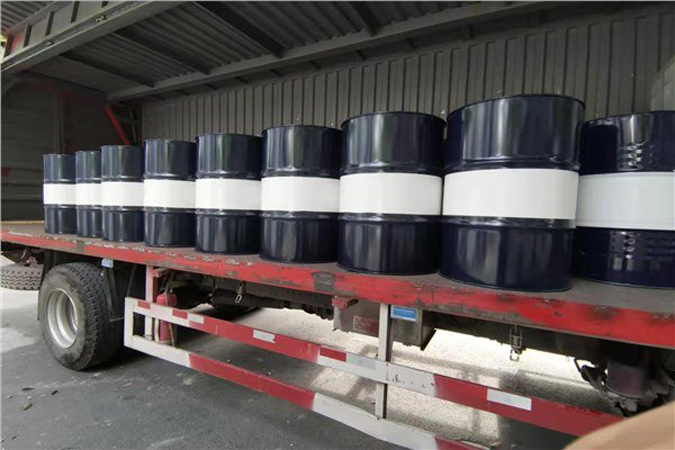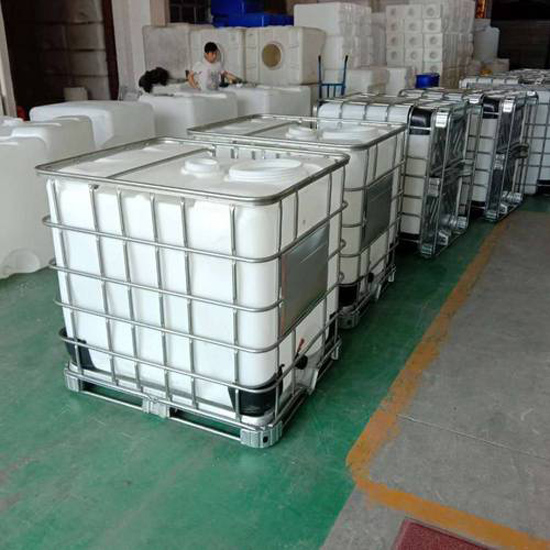Detection and control of heavy metals and organotin content in powder coatings
Abstract: The current status and problems of powder coatings are described, and the regulatory means for powder coatings containing pollutants such as heavy metals and organic tin content are highlighted, and the development trend of green powder coatings is predicted.
0 Introduction
With the continuous improvement of the country’s industrialization level, paint plays an increasingly important role in people’s daily life and has become an indispensable necessity in modern industrial society, but it is also one of the main sources of atmospheric pollutants. With the increasing awareness of environmental protection, people’s constant pursuit of living environment and human health, the requirements for paint quality are getting higher and higher, so the production and use of environmentally friendly and human health-friendly green paint has become the future development trend of paint products. As a representative of solvent-free coatings, powder coatings have a much lower emission of volatile organic compounds (VOC) than traditional solvent-based coatings, and have a high paint utilisation rate. Powder coatings are therefore of great interest as an environmentally friendly coating. However, there are still some shortcomings and problems in the production process and use of powder coatings, such as excessive heavy metal and organic tin content, to solve these problems, we still have to start from the selection of raw materials, the update of the formula, the innovation of the production process, the improvement of the system and regulations. For example, compared to ordinary powder coatings, powder coatings used in the home, children’s products and other demanding products, but also to strictly regulate the selection of materials and formula design, increase supervision.

1 The current state of environmental, safety and health awareness in powder coatings
Most powder coatings have different degrees of adverse effects on the environment and human body during production and use. On the one hand, heavy metal pigments are widely used in powder coatings and other industries because of their wide sources, strong covering power and low price. However, as heavy metals cannot be biodegraded after entering the human body, they can lead to anaemia, dizziness and arteriosclerosis when dissolved in the blood, and lead poisoning in children can also lead to developmental delays and mental retardation. Powder coatings can have a negative impact not only during the production process, but also after the product has been painted. Therefore, caution is needed when using them on children’s equipment, food packaging, household appliances and objects that are in permanent or repeated contact with the human body. On the other hand, organotin compounds are often used as catalysts for the synthesis of polyester resins in the production of powder coatings due to their high activity and good performance. However, there have been several cases of non-industrial poisoning from organotins in recent years, raising concerns about the toxicity of organotins. Organotin compounds have now been identified as endocrine disruptors and important persistent toxicants. The level of toxicity of organotin compounds is related to the number and type of R substituents in the molecular formula, with dibutyltin (DBT), tributyltin (TBT) and triphenyltin (TPT) being the most toxic. Some organotin catalysts can cause damage to the liver and biliary system and the nervous system when they enter the human system. Therefore, it is important to use tin-containing catalysts with caution in the production of powder coatings.

2 Quality control of heavy metals and organotins in powder coatings
Nowadays, the requirements for the quality of powder coating products are getting higher and higher. The requirements for the production of green powder coatings are obviously more stringent and impose stricter requirements on the control of their product quality.
2.1 Interpretation of relevant standards
The requirements of local regulations and various types of products are varied and different. It is important to understand clearly from the customer, so that the formulation, production and testing planning can be reasonably formulated to achieve targeting and accurate control. Some of the laws and regulations are outlined in Table 1.
Due to the different standard methods, some items have different limit values and test data in different standards, for example, organotin, see Table 2 for details.
2.2 Reasonable formulation options
The choice and quality of raw materials is the basic condition to ensure that powder coating products are more environmentally friendly, safer and healthier, as already mentioned before, raw materials containing heavy metals and organic tin should be used sparingly. If the product in question is to be applied to items such as children’s toys and IKEA furniture, it is recommended that polyester resins synthesised with special tin-free catalysts be used for production. Inorganic pigments containing heavy metals such as lead chrome yellow and molybdenum chrome red are more obvious, we can use inorganic pigments such as iron red and iron yellow, titanium nickel yellow, bismuth vanadate yellow and some organic pigments instead.
2.3 Control of the production process
Strictly control the reuse of over-engineered materials, landed materials and recycled materials. If possible, try to build a separate special workshop according to the requirements.
2.4 Monitoring of product quality
A laboratory with some ability to test and monitor quality should be established to monitor the overall quality management process starting with all raw materials through to the finished powder coating product. These tests include: through authoritative third party external inspection (e.g. SGS, ITS, ITTC, etc.) and in-plant quality control, detection of heavy metals can be done by using heavy metal detection instruments (X-ray fluorescence spectrometer) to do pre-screening, and further testing or rejection if in doubt. For the detection of organic tin, gas chromatography-mass spectrometry (GC-MS) is available, while inductively coupled plasma-mass spectrometry (ICP-MS) and inductively coupled plasma emission spectrometry (ICP-OES) are available for internal quality control, and manufacturers can also equip themselves with X-ray fluorescence spectrometers (XRF) for rapid and low-cost testing of tin elements in products and raw materials. Self-controlled testing methods, in the process of establishing perfection also need to constantly compare data with authoritative third-party testing institutions in order to make a correct assessment.

2.5 Presentation of relevant case studies
A sample powder was supplied to a customer with a children’s product requirement, which did not use any raw materials containing heavy metals in the molecular structure, but the heavy metal content (free barium) of the product exceeded the limit. The reason for this was that a certain organic pigment (Bao Red), which is a colour precipitated pigment, used an inorganic substance (barium chloride) containing a certain amount of heavy metal elements as a carrier.
The organic tin was once detected in the incoming inspection of the epoxy resin. If there is no means of inspection, the selection of materials based on subjective experience alone may cause great potential quality problems.
Therefore, quality control work must be carried out in a full-coverage, whole-process manner to ensure that nothing is left out.
3 The development trend of green powder coatings
The current requirements for green coatings are mainly manifested in two aspects: on the one hand, to reduce the emission of VOC during the production and construction of coatings, and to reduce the environmental hazards caused by volatilisation; on the other hand, the total amount of organic substances should be reduced while the toxicity of organic substances should be controlled, so as to avoid causing injury to the relevant personnel during the production, construction and long-term use. As powder coatings consist of 100 % solid ingredients, zero VOC emissions can be achieved. Therefore, the development of green powder coatings also requires the following: (1) limit the addition of organotin as a catalyst for powder coatings containing polyester resins and their antibacterial function as an antimicrobial agent; (2) avoid the use of raw materials containing heavy metals; (3) there is also a safe, efficient and clean production management. By doing the above, the pace of “paint to powder” will be faster and the road to green powder coatings will be broader.

4 Conclusion
From the perspective of environmental protection, safety and health awareness of powder coatings at home and abroad, the development trend of green powder coatings is briefly described, and the importance of testing and analysis of powder coatings containing heavy metals and organic tin to the development of green powder coatings is highlighted. It is expected that green powder coatings will have a better development in China and bring more personal benefits to people’s life.

